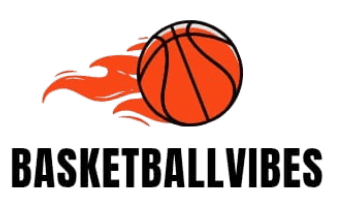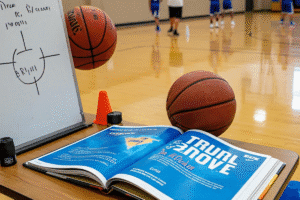Ever found yourself wondering how many basketball players are on the court at a time and actually battling out the competition? Well, you’re not alone! I’ve dug into the rules, and I’m here to lay it all out for you, keeping it simple and engaging.
How Many Basketball Players Are on the Court at a Time? The Starting Lineup
First things first, let’s get down to the core of the game. Basketball is a team sport where, at any given moment, each team puts five players on the court. That’s right, just five! Think of it as a tightly coordinated dance, where each player has a crucial role to play.
- Two Forwards: These players are often your powerhouses, battling for rebounds and scoring inside.
- Two Guards: These are your playmakers, dribbling, passing, and shooting from the outside.
- One Center: The big person in the middle, dominating the paint and often grabbing those crucial rebounds.
It’s like a superhero team, each with their own special abilities!
The Full Roster of Players
Now, while only five players are on the court at a time, a full NBA team roster is much larger. During the regular season, teams typically have 14 or 15 players on their active and inactive lists combined. This allows for substitutions, strategic plays, and dealing with those inevitable injuries.
- Teams can temporarily drop to 13 players for up to two weeks, and this can happen for a total of 28 days across the entire season.
- However, they must always have at least 12 players on their active list.
Think of it as having a bench full of talent, ready to jump in and change the game.
Two-Way Players: Bridging the Gap
Adding another layer to the roster are two-way players. These athletes split their time between the NBA team and its G-League affiliate. A team can have up to two two-way players, and they don’t count towards the 14 or 15 player limit. This gives teams flexibility to develop talent and bring in fresh legs when needed.

A player trying to steal the ball
Offseason Flexibility: Building the Team
During the offseason, the rules loosen up a bit. Teams can have as many as 20 players signed to contracts, including up to 18 standard contracts and two two-way contracts. This allows for extensive player evaluation and helps teams build the best possible roster for the upcoming season.
The Basics of the Game: More Than Just Numbers
Okay, so we know how many players are on the court and the roster. But what about the game itself? Let’s cover some of the basic rules.
Starting the Game: The Jump Ball
Every game starts with a jump ball, or tip-off. The referee throws the ball into the air in the center circle, and one player from each team tries to tap the ball away. It’s a moment of pure athleticism and anticipation!
Dribbling and Ball Handling: Moving the Ball
Dribbling is a fundamental skill in basketball. Players must dribble the ball with one hand while moving their feet. The ball can only be moved in three ways: dribbling, passing, or shooting for the hoop.
Game Time: Four Quarters of Action
A basketball game is equally divided into four 12-minute quarters. The goal? To score more points than the opposing team by shooting or throwing the ball into the hoop. Simple, right? Well, not always!
The Court: Where the Magic Happens
The basketball court is a rectangular space measuring 91 feet long by 50 feet wide. It’s divided into two main sections by the middle court line. Key features include:
- A halfway line with a center circle.
- Two baskets, each 10 feet in height.
- A three-point arc.
- The key, which includes a free throw line.
Basic Rules: Keeping It Fair
To keep the game fair and flowing, there are a few basic rules to remember:
- Each team can have a maximum of five players on the court at a time.
- Teams can substitute players as many times as they wish.
- Players are not allowed to kick the ball or hit it with their fist.
- Players cannot stay in the backcourt for more than 8 seconds.
- Players cannot hold the ball in the key for more than 3 seconds.
- Players have 24 seconds to shoot the ball.
Fouls & Violations: Free Throws & Penalties
Let’s break down the “uh-oh” moments that can flip the game’s momentum:
Fouls—The Four Flavors of Trouble
- Personal Fouls: Think of these as “oops, my bad” contact moments. If a defender hip-checks a shooter or an offensive player bulldozes through a set defender (looking at you, LeBron), it’s a foul.
- Technical Fouls: The “don’t yell at the ref” rule. Trash-talking officials, kicking chairs, or having too many players on the court? That’s a tech. Two of these = ejection.
- Unsportsmanlike Fouls: The “seriously, dude?” move. Think intentional tripping or swatting a layup way after the whistle. Automatic free throws + possession for the other team.
- Disqualifying Fouls: The “you’re outta here!” call. Reserved for fights, extreme disrespect, or dangerous plays. Grab your Gatorade and hit the locker room.
Fouls, such as charging, can result in free throws, giving the opposing team an opportunity to score points unopposed.
Violations—Turnover Possession!
When a player violates a rule, the opposing team gets possession of the ball. Common violations include:
1. Double Dribble Drama
Imagine you’re dribbling down the court, feeling like a pro—then you suddenly stop and think, “Wait, let me try that again.” Nope! Double dribbling is basketball’s version of “you had your chance.” Once you stop dribbling, you can’t start again or carry the ball AKA you have to pass or shoot. It’s like hitting pause on a video game and then trying to sneak in extra moves. Do it? Ref whistle symphony. Ball goes to the other team.
2. The Shot Clock Sting
That 24-second timer? It’s like a game of hot potato. If the ball touches the rim, the clock resets. But if you’re still holding it when the buzzer screams? Turnover. Cue the groans from the crowd.
3. The “Foot Foul” Quirk
Kicking the ball accidentally (looking at you, soccer fans) isn’t always a disaster:
- Defenders: If you kick it, the offense gets a fresh 14 seconds if the shot clock’s below 10.
- Attackers: If you kick it? Oops—the ball goes to the other team.
4. Goaltending—The Ultimate Buzzkill
- Defensive Goaltending: Swatting a ball midair as it arcs toward the basket? The shot counts anyway. Talk about a mood killer.
- Offensive Goaltending: Tipping in a teammate’s shot while it’s still on the rim? No points for you—the ball goes the other way.
5. The Sneaky Backcourt Violation
Once your team crosses midcourt, you can’t pass back to your own half. Imagine it like a “no returns” policy after Black Friday shopping. Break this rule? Turnover!
6. Traveling: The “Pivot Foot Tango”
Stopped dribbling? You’ve got two steps to pass or shoot. Lift that pivot foot? Cool—but if you put it down before releasing the ball, it’s traveling. Cue the ref’s dramatic whistle.
7. Three in The Key Problem
It is a three-second violation, where an offensive player cannot remain in the restricted area (the key) for more than three consecutive seconds while their team has possession of the ball and the game clock is running.
8. Charging
Picture you’re sprinting toward the hoop like a runaway train, and a defender plants their feet like a stubborn oak tree. If you crash into them? That’s charging—a ”my bad” offensive foul. No bulldozing allowed! It’s like trying to plow through a closed door instead of using the handle. Result? Turnover, groans from your team, and maybe a side-eye from the coach.
Scoring: Points on the Board
There are three different ways to earn points in basketball:
- Three points for a basket scored from outside the three-point arc.
- Two points for a basket scored within the three-point arc.
- One point for a successful free throw.
Winning the Game: More Points Wins
The team that scores more points in the allowed game time wins the game. If the scores are tied, an extra quarter is played until a winner is found.
Conclusion: A Team Effort
Basketball is a team sport that requires coordination, skill, and strategy. Knowing how many basketball players are on the court at a time and understanding the basic rules is essential for enjoying the game. So, the next time you watch a basketball game, you’ll know exactly what’s going on!
I hope this breakdown was helpful and engaging. Remember, it’s all about teamwork, skill, and a bit of fun!







